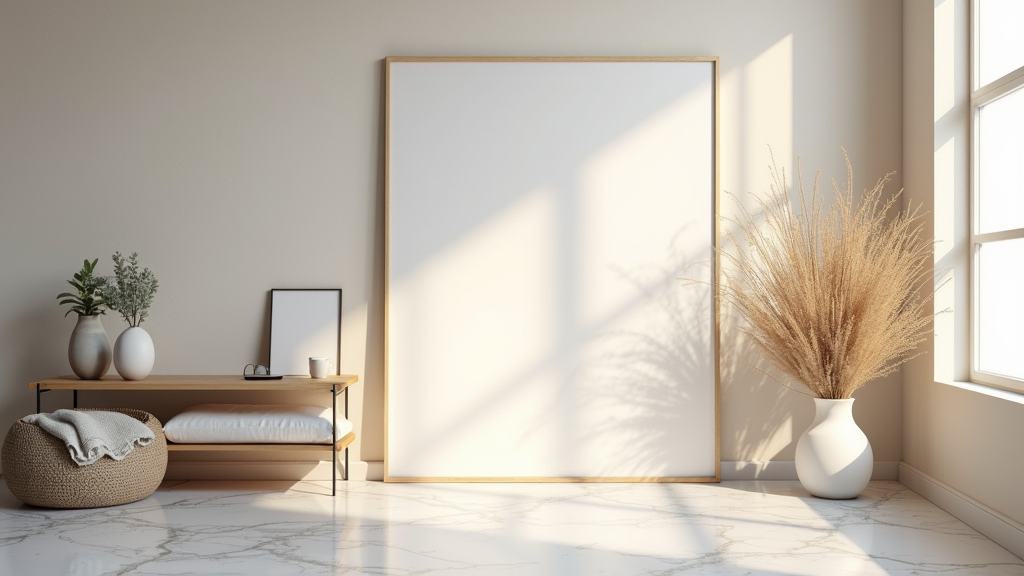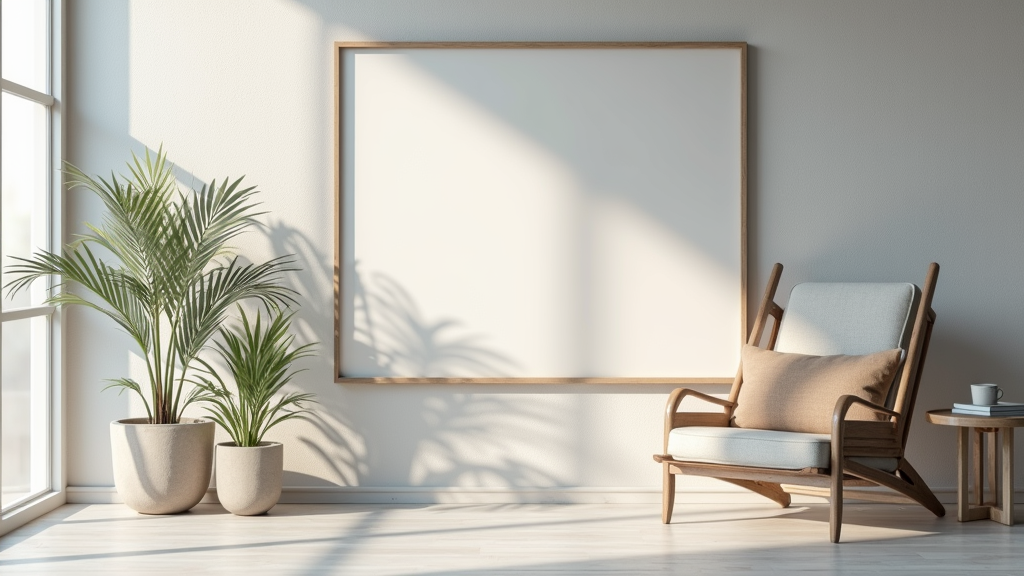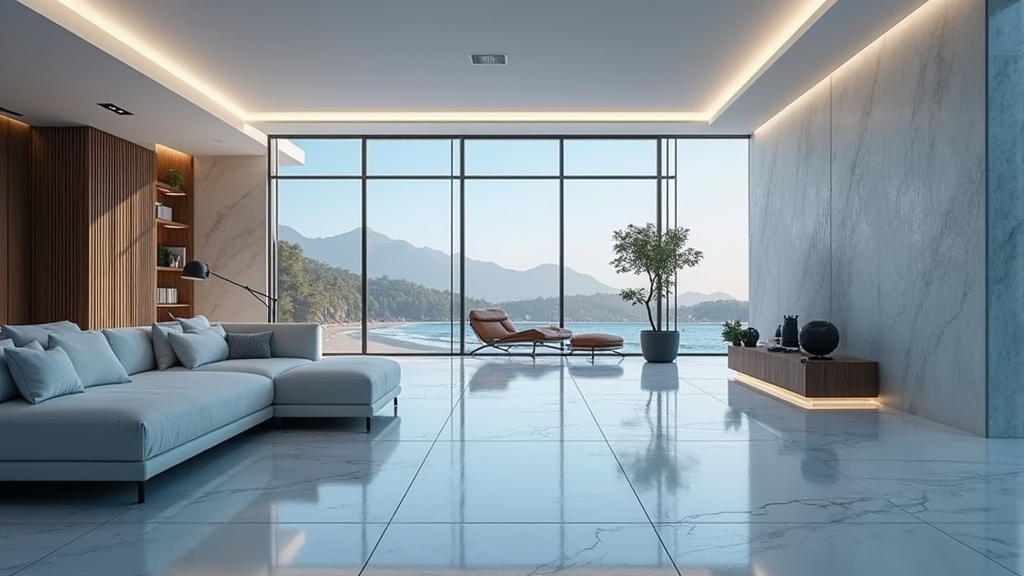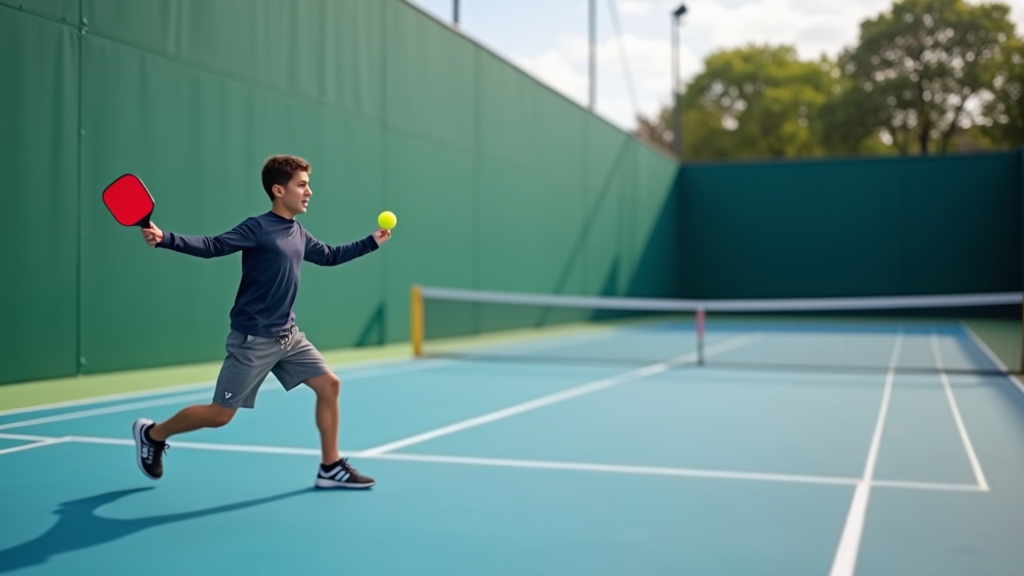Table of Contents
- Introduction
- Understanding the Basics of Sports Fencing
- Detailed Guide
- Maintenance and Regulations
- Additional Features and Considerations
- Cost and Installation
- Warranty and Lifespan
- Benefits and Disadvantages of Fencing
Introduction

Overview and Importance
Pickleball court fencing is more than just an enclosure; it’s a crucial element for ensuring safety, enhancing playability, and contributing to the overall aesthetics of the court. A well-designed and properly installed fence prevents pickleballs from constantly escaping the court, which minimizes interruptions and significantly improves the player experience. Imagine not having to chase after every errant shot – that’s the power of good fencing.
Consider these key statistics: a well-fenced court can reduce ball retrieval time by up to 75%. This means more time playing and less time fetching. Furthermore, fencing can enhance the aesthetic appeal of your court, potentially increasing property value by up to 5%. It’s not just about functionality; it’s about adding value and curb appeal.
Why does all this matter? Firstly, proper fencing ensures continuous gameplay. No more frustrating pauses to retrieve balls from neighboring yards or gardens. Secondly, it clearly defines the court boundaries, preventing disputes and ensuring fair play. Finally, by improving both the functionality and appearance of your pickleball court, fencing adds significant value and appeal to your property.
Background
The importance of pickleball court fencing wasn’t always recognized. In the early days of the sport, many courts lacked proper fencing, leading to frequent interruptions and a less-than-ideal playing experience. Players spent considerable time chasing after balls, which detracted from the flow and enjoyment of the game. As pickleball gained popularity, the need for standardized fencing became increasingly apparent.
Recent developments in fencing technology have brought about significant improvements. We’ve seen the introduction of various fencing materials, such as mesh and vinyl, each offering different benefits in terms of durability, visibility, and aesthetics. Mesh fencing provides excellent visibility and is relatively lightweight, while vinyl fencing offers superior durability and a clean, professional look. Advancements in installation techniques have also contributed to better stability and longevity of fences, ensuring they can withstand the rigors of regular play and varying weather conditions.
What You’ll Learn
In this guide, you’ll delve into the core concepts of pickleball court fencing, gaining a comprehensive understanding of what makes a fence effective and aesthetically pleasing. You’ll learn about the ideal height, materials, and placement of fencing, ensuring optimal performance and safety. We’ll also cover essential safety standards and local regulations to keep you compliant and protected.
Beyond theory, this guide offers practical applications to help you implement what you’ve learned. We’ll provide a step-by-step guide to installing different types of fencing, empowering you to tackle the project yourself or confidently oversee a professional installation. Finally, we’ll share valuable maintenance tips to prolong the life of your fence, ensuring it continues to enhance your pickleball experience for years to come.
Understanding the Basics of Sports Fencing
Fundamental Concepts
Before diving into the specifics of sports fencing, it’s crucial to grasp some fundamental concepts that underpin its design and functionality. These concepts ensure that the fencing effectively serves its purpose, whether it’s for a tennis court, baseball field, or soccer pitch.
Let’s start with some key definitions:
- Fence Height:This refers to the vertical distance from the ground to the uppermost point of the fence. Proper fence height is critical for containing balls and ensuring safety.
- Mesh Gauge:Mesh gauge defines the thickness of the wire used in mesh fencing materials, such as chain-link. A lower gauge number indicates a thicker, more durable wire.
- Post Spacing:Post spacing is the distance between individual fence posts. Consistent and appropriate post spacing is essential for maintaining the fence’s structural integrity and preventing sagging. Typically, this distance ranges from 8 to 10 feet.
Beyond definitions, understanding the core principles of sports fencing is equally important. These principles guide the selection of materials, the design of the fence, and its overall implementation.
- Safety:Safety is paramount. Sports fencing must protect players and spectators from stray balls and potential injuries. This includes selecting appropriate fence height and considering padding options.
- Visibility:While containing balls is crucial, maintaining clear visibility of the playing area is also essential for both players and spectators. The fence design should minimize obstructions and allow for unobstructed viewing.
- Durability:Sports fencing is subjected to constant impact from balls, exposure to weather, and general wear and tear. Selecting durable materials that can withstand these conditions is vital for ensuring the fence’s longevity and minimizing maintenance.
Essential Components
A sports fence is more than just a barrier; it’s a carefully engineered system comprising several essential components working in harmony. Understanding these components and their key features is crucial for effective fence design and installation.
Here are the required elements of a standard sports fence:
- Fence posts:These provide the primary structural support for the entire fence. They are typically made of steel or wood and are embedded securely in the ground.
- Fencing material:This is the barrier itself, which can be chain-link, mesh, or solid panels depending on the sport and desired level of visibility and containment.
- Gates:Gates provide access to the playing area and should be equipped with self-closing mechanisms to ensure they remain closed during play, preventing balls from escaping.
When selecting these components, consider the following key features:
Primary aspects:
- Height:As mentioned earlier, height is crucial for safety. A height of 8-10 feet is generally recommended, with 8 feet often suitable for recreational use and 10 feet preferred for competitive environments.
- Material:The choice of material depends on the sport, budget, and aesthetic preferences. Common options include chain-link, mesh, vinyl, and wood, each offering different levels of durability, visibility, and cost.
- Gate placement:Gate placement should be strategic, allowing easy access while minimizing disruption to the playing area. Gates should always open outwards, away from the playing area, to prevent interference with play.
Secondary aspects:
- Padding:Padding can be added to posts and rails to provide an extra layer of safety, especially in sports with a high risk of player-fence collisions.
- Windscreens:Windscreens can be attached to the fence to reduce wind impact on the playing area and provide privacy. They are particularly useful for tennis courts and other outdoor venues.
- Decorative options:Depending on the setting, decorative options such as colored or ornamental panels can be incorporated to enhance the fence’s aesthetic appeal.
Important variations:
- Chain-link gauge:Chain-link gauge typically ranges from 9 to 11 gauge. A lower gauge number indicates a thicker, stronger wire, providing greater durability and resistance to damage.
- Mesh density:Mesh density, measured in holes per square inch (HPSI), affects the fence’s ability to retain balls. Higher HPSI values provide better ball retention, which is particularly important for sports like tennis and pickleball.
- Post diameter:The diameter of steel posts is typically 2.5 to 3 inches. A larger diameter provides greater strength and stability, especially in areas with high winds or heavy use.
Detailed Guide

Preparation
Before diving into the installation, meticulous preparation is key to ensuring a durable and effective fence for your pickleball court. This involves gathering the right materials, setting up the area, and considering crucial factors that can impact the fence’s longevity and performance.
Required materials:
- Fence posts (steel, wood, or vinyl): These provide the vertical support for your fence. Choose a material that suits your budget, aesthetic preferences, and local climate.
- Fencing material (chain-link, mesh, or solid panels): The type of fencing material will significantly affect the fence’s appearance, cost, and maintenance requirements. Chain-link is durable and cost-effective, mesh offers a balance of visibility and protection, while solid panels provide maximum privacy and wind resistance.
- Concrete mix for setting posts: This is essential for anchoring the posts securely in the ground. Use a high-quality concrete mix designed for setting posts.
- Tension bands and ties (for chain-link): These are used to attach the chain-link fabric to the posts and top rail.
- Clips (for mesh): These secure the mesh fencing material to the posts.
- Gate and hardware: Select a gate that is wide enough for easy access and includes reliable hinges and a latch.
- Measuring tape, level, post-hole digger, and safety gear: Accurate measurements are crucial for proper fence alignment. A level ensures vertical posts, a post-hole digger simplifies hole excavation, and safety gear protects you during the installation process.
Initial setup:
Start by clearing the area where the fence will be installed. Remove any debris, rocks, vegetation, or other obstructions that could interfere with the installation. Accurately measure the perimeter of the court. Remember, the official pickleball court dimensions are 20 feet wide and 44 feet long for the playing area. However, it’s highly recommended to add a run-off space of at least 10 feet around the court for safety and player comfort. Once you have the perimeter measurements, mark the locations for the fence posts. Typically, posts are spaced 8-10 feet apart to provide adequate support for the fencing material.
Important considerations:
Before you begin construction, it is important to check local building codes and regulations regarding fence height, materials, and setback requirements. These regulations vary from place to place, so it’s crucial to ensure compliance to avoid potential fines or the need to rework your fence. Proper drainage is also vital to prevent water damage to the fence. Ensure that the ground slopes away from the fence line to allow water to drain away. Finally, consider the wind conditions in your area when selecting fencing material. If you live in a windy area, choose a material that can withstand strong winds without being damaged.
Step-by-Step Process
With the preparation complete, you can now proceed with the installation. Follow these step-by-step instructions for a successful fence installation.
Clear instructions:
Best practices:
- Use a level to ensure posts are perfectly vertical. This will ensure a professional-looking and structurally sound fence.
- Stretch chain-link fencing tightly to prevent sagging. Sagging chain-link can be unsightly and can also compromise the security of the fence.
- Secure all connections to prevent loosening over time. Regularly inspect the fence and tighten any loose connections to maintain its integrity.
Common mistakes to avoid:
- Not digging deep enough post holes, leading to instability. This is a common mistake that can result in the fence leaning or collapsing over time.
- Over-tightening chain-link, which can damage the material. Over-tightening can stretch or tear the chain-link fabric.
- Neglecting to check local regulations, resulting in fines or rework. Always check local building codes and regulations before starting any construction project.
Advanced Techniques
For those seeking to elevate their fence installation, consider these advanced techniques for enhanced durability, safety, and aesthetics.
Expert tips:
- Use rust-resistant materials, especially in coastal areas. Saltwater can accelerate the corrosion of metal fences, so rust-resistant materials are essential for longevity.
- Install padding on posts and rails to minimize injury risk. This is especially important if children will be playing near the fence.
- Consider adding windscreens to reduce wind impact and increase privacy. Windscreens can also help to improve the playing conditions on windy days.
Optimization methods:
- Use a laser level to ensure precise post alignment. A laser level can help you achieve perfectly aligned posts, resulting in a professional-looking fence.
- Apply a sealant to wood fences to protect against moisture. Sealant will help to prevent the wood from rotting or warping.
- Choose a fencing material that complements the surrounding landscape. The fence should blend in with the surrounding environment and enhance the overall aesthetic appeal of the property.
Troubleshooting:
- Sagging fence: Tighten tension bands or replace damaged sections. Sagging can be caused by loose tension bands or damaged fencing material.
- Rusted chain-link: Apply a rust inhibitor or replace affected areas. Rust can weaken the chain-link and compromise its integrity.
- Gate not latching: Adjust the latch mechanism or realign the gate. A gate that doesn’t latch properly can be a safety hazard.
Maintenance and Regulations
Regular Maintenance
Maintaining your chain-link fence is crucial for extending its lifespan and ensuring it continues to provide the security and aesthetic appeal you desire. A proactive approach to maintenance can save you money in the long run by preventing costly repairs and replacements.
Inspection for damage or wear: Regularly inspecting your chain-link fence is the first line of defense against potential problems. Make it a habit to walk the perimeter of your fence, checking for loose connections, rust spots, or any signs of damage from impact. Pay close attention to areas where the fence meets posts and gates, as these are common weak points. Promptly addressing any issues, no matter how small they may seem, is essential to prevent further deterioration and maintain the fence’s structural integrity.
Cleaning with mild detergent and water: Over time, dirt, grime, and other environmental pollutants can accumulate on your chain-link fence, diminishing its appearance. Periodically washing the fence with a mild detergent and water will help restore its shine and prevent the buildup of corrosive substances. Use a soft brush or cloth to gently scrub the surface, being careful to avoid scratching the finish. Rinse thoroughly with clean water to remove any soap residue.
Protecting chain-link fencing against rust: Rust is a common enemy of chain-link fences, especially those made of steel. To combat rust, consider applying rust inhibitors or choosing rust-resistant materials like galvanized steel. Galvanization involves coating the steel with a layer of zinc, which acts as a barrier against corrosion. For added protection, you might also consider powder-coating, a process that applies a durable, weather-resistant coating to the fence. Regularly inspect your fence for any signs of rust and treat affected areas promptly to prevent the spread of corrosion.
Local Regulations and Compliance
Before installing or modifying a chain-link fence, it’s imperative to understand and comply with all applicable local regulations. Failure to do so can result in fines, legal issues, and even the forced removal of your fence. Taking the time to research and adhere to these regulations will save you headaches and ensure your fence meets all necessary requirements.
Check and comply with local building codes: Local building codes often dictate specific requirements for fences, including height restrictions, material limitations, and setback requirements. Researching these codes is essential before you begin any work. Contact your local building department or consult their website to gather the necessary information. In many cases, you’ll need to obtain permits before starting the installation process. Failing to secure the required permits can lead to significant penalties.
Adhere to zoning laws: Zoning laws regulate how land can be used in different areas. These laws may impact the type of fence you can install, its location on your property, and its overall appearance. Ensure your fence meets all zoning requirements for your specific property type, whether it’s residential or commercial. Zoning regulations are designed to maintain the character of neighborhoods and prevent conflicts between property owners.
Consider HOA guidelines: If your property is part of a homeowner’s association (HOA), you’ll need to follow any specific rules set by the HOA regarding fencing. HOA guidelines often cover aspects such as fence height, style, color, and materials. Review your HOA’s covenants, conditions, and restrictions (CC&Rs) to understand their requirements. Submitting your fence plans to the HOA for approval before starting any work is a good practice to avoid potential disputes.
Additional Features and Considerations

Enhancements for Safety and Playability
Beyond the core components of a padel court, several additional features can significantly enhance both safety and playability, making the experience more enjoyable and secure for everyone.
- Padding for posts and rails:Padel involves dynamic movements, and accidental collisions with the posts or rails are not uncommon. Implementing padding is a crucial safety measure to minimize the risk of injury. High-density foam padding is recommended for maximum protection, effectively absorbing impact and reducing the potential for bruises or more serious harm. Ensure the padding is securely attached and covers all exposed edges and corners.
- Windscreens for wind impact and privacy:Wind can significantly affect the trajectory of the ball, making gameplay challenging and unpredictable. Windscreens are an excellent solution to mitigate wind interference, providing a more consistent playing experience. Furthermore, windscreens offer an added layer of privacy, shielding the court from the view of neighbors or passersby, allowing players to focus on the game without distractions.
- Ball rebounder or ball stop netting:For players looking to hone their skills or practice independently, a ball rebounder or ball stop netting can be invaluable. These features are particularly useful for solo training sessions, allowing players to repeatedly practice shots without the need to constantly retrieve the ball. Ball stop netting also prevents balls from leaving the court area during intense play, saving time and preventing potential hazards.
Padel involves dynamic movements, and accidental collisions with the posts or rails are not uncommon. Implementing padding is a crucial safety measure to minimize the risk of injury. High-density foam padding is recommended for maximum protection, effectively absorbing impact and reducing the potential for bruises or more serious harm. Ensure the padding is securely attached and covers all exposed edges and corners.
Wind can significantly affect the trajectory of the ball, making gameplay challenging and unpredictable. Windscreens are an excellent solution to mitigate wind interference, providing a more consistent playing experience. Furthermore, windscreens offer an added layer of privacy, shielding the court from the view of neighbors or passersby, allowing players to focus on the game without distractions.
For players looking to hone their skills or practice independently, a ball rebounder or ball stop netting can be invaluable. These features are particularly useful for solo training sessions, allowing players to repeatedly practice shots without the need to constantly retrieve the ball. Ball stop netting also prevents balls from leaving the court area during intense play, saving time and preventing potential hazards.
Aesthetic and Functional Options
While functionality is paramount, incorporating aesthetic and functional options can elevate the overall appeal and usability of your padel court.
- Decorative options:A padel court doesn’t have to be purely utilitarian. Colored or ornamental panels can be added to the court’s structure to enhance its visual appeal and create a more inviting playing environment. When choosing decorative options, consider the surrounding environment and select designs that complement the existing landscape and architecture. Thoughtful aesthetic choices can transform a standard court into a visually stunning centerpiece.
- Lighting for nighttime play:Extending playtime into the evening hours is easily achievable with the installation of a proper lighting system. LED lighting systems are highly recommended for their energy efficiency and ability to provide bright, even illumination across the entire court. Careful attention should be paid to the positioning and angle of the lights to minimize shadows and glare, which can impair visibility and affect gameplay. Always consider compliance with local guidelines for light pollution to minimize disturbance to surrounding areas.
- Gate options:The choice of gate can impact both accessibility and security. Single gates are suitable for most residential setups, while double gates offer wider access for maintenance equipment or players with mobility aids. Adding a lock to the gate is a simple yet effective way to secure the court when not in use, preventing unauthorized access and potential misuse.
A padel court doesn’t have to be purely utilitarian. Colored or ornamental panels can be added to the court’s structure to enhance its visual appeal and create a more inviting playing environment. When choosing decorative options, consider the surrounding environment and select designs that complement the existing landscape and architecture. Thoughtful aesthetic choices can transform a standard court into a visually stunning centerpiece.
Extending playtime into the evening hours is easily achievable with the installation of a proper lighting system. LED lighting systems are highly recommended for their energy efficiency and ability to provide bright, even illumination across the entire court. Careful attention should be paid to the positioning and angle of the lights to minimize shadows and glare, which can impair visibility and affect gameplay. Always consider compliance with local guidelines for light pollution to minimize disturbance to surrounding areas.
The choice of gate can impact both accessibility and security. Single gates are suitable for most residential setups, while double gates offer wider access for maintenance equipment or players with mobility aids. Adding a lock to the gate is a simple yet effective way to secure the court when not in use, preventing unauthorized access and potential misuse.
Cost and Installation
Cost Breakdown
Building your own pickleball court is an exciting endeavor, but understanding the costs involved is crucial for budgeting and planning. The overall cost can vary widely depending on the materials you choose, whether you opt for professional installation or decide to tackle it yourself, and other miscellaneous expenses.
Materials: The type of fencing you select will significantly impact your budget. Here’s a general breakdown of fencing material costs per linear foot:
- Chain-link: $5-$10
- Mesh: $8-$15
- Vinyl: $12-$20
- Wood: $15-$25
Installation: Professional installation can range from $1,500 to $3,000 for a regulation-size court. This includes labor, equipment, and expertise to ensure the fence is properly installed and meets all safety standards. Opting for DIY installation can save you a considerable amount on labor costs. However, it requires a significant investment of your time and effort. You’ll need to be prepared to handle tasks such as digging post holes, setting posts, and stretching the fencing material.
Other costs: Don’t forget to factor in potential additional costs. Permits may be required by your local municipality, typically ranging from $50 to $200. If you’re pouring a concrete base for your fence posts, you’ll need to purchase concrete, which generally costs $5-$10 per bag.
Installation Timeline
The time it takes to install your pickleball court fence will depend on whether you choose professional installation or go the DIY route.
Professional installation: A professional team can typically complete the installation in 1-2 days. Their experience and specialized equipment allow them to work efficiently and ensure the job is done quickly and correctly.
Self-installation: If you decide to install the fence yourself, expect the project to take 3-5 days. This timeframe accounts for the time needed to gather materials, prepare the site, install the posts, and attach the fencing. Keep in mind that this is just an estimate, and the actual time may vary depending on your skill level and the complexity of the project.
Warranty and Lifespan

Warranty Details
Understanding the warranty and expected lifespan of your fence is crucial for making an informed decision. Our standard warranty covers all installations for a period of 1 year. This warranty protects against defects in workmanship and materials, ensuring that your fence is installed correctly and functions as intended from day one. Should any issues arise during this period due to installation errors or material flaws, we will promptly address and rectify them.
For added peace of mind, we offer extended warranty options on select materials and installations. Depending on the type of fencing you choose, you may be eligible for extended coverage up to 5 years. This extended warranty provides long-term protection against potential issues, giving you confidence in the durability and longevity of your investment. Be sure to ask about extended warranty options when discussing your fencing project with our team.
Lifespan Expectations
The lifespan of your fence will vary depending on the material you select and the level of maintenance it receives. Different materials have inherent properties that affect their resistance to weathering, pests, and general wear and tear. Here’s a general overview of what you can expect from some common fencing materials:
- <strong>Wood:</strong> With proper sealing and staining, a wood fence can last approximately 5-10 years. Regular maintenance is key to preventing rot and insect damage, which can significantly shorten its lifespan.
- <strong>Chain-link:</strong> Chain-link fences are known for their durability. With rust prevention measures, such as galvanization or vinyl coating, a chain-link fence can last 10-15 years, offering a long-lasting and cost-effective security solution.
- <strong>Vinyl:</strong> Vinyl fencing is a low-maintenance option with an impressive lifespan. With minimal upkeep, a vinyl fence can last 15-20 years or even longer. It is resistant to rot, pests, and weathering, making it a durable and attractive choice for many homeowners.
<strong>Wood:</strong> With proper sealing and staining, a wood fence can last approximately 5-10 years. Regular maintenance is key to preventing rot and insect damage, which can significantly shorten its lifespan.
<strong>Chain-link:</strong> Chain-link fences are known for their durability. With rust prevention measures, such as galvanization or vinyl coating, a chain-link fence can last 10-15 years, offering a long-lasting and cost-effective security solution.
<strong>Vinyl:</strong> Vinyl fencing is a low-maintenance option with an impressive lifespan. With minimal upkeep, a vinyl fence can last 15-20 years or even longer. It is resistant to rot, pests, and weathering, making it a durable and attractive choice for many homeowners.
Remember that these are just estimates, and the actual lifespan of your fence may vary based on environmental factors, maintenance practices, and the quality of materials used. Consistent care and timely repairs can help extend the life of your fence and keep it looking its best for years to come.
Benefits and Disadvantages of Fencing
Advantages of Fencing
Fencing offers a multitude of benefits, making it a worthwhile investment for many homeowners and property managers. One of the most practical advantages, particularly for sports enthusiasts, is that it helps keep balls in play, preventing them from straying into neighboring yards or busy streets. This is especially useful for basketball courts, tennis courts, or even just for families who enjoy playing catch in their backyard.
Beyond the practical, fencing provides a significant increase in privacy. Whether you’re seeking refuge from prying eyes or simply want to create a more secluded outdoor living space, a well-placed fence can offer a sense of sanctuary and personal space. This can be particularly valuable in densely populated areas.
Aesthetically, fencing can dramatically enhance the curb appeal and overall value of a property. With a wide array of styles, materials, and colors available, you can choose a fence that complements your home’s architecture and landscaping. A thoughtfully designed fence can transform a mundane yard into a visually appealing oasis.
Security is another key advantage. Fencing acts as a deterrent to potential criminals, making it more difficult for them to access your property. Combined with security cameras and other measures, a fence can provide an added layer of protection for your home and family.
Finally, fencing is invaluable for families with young children or pets. It creates a safe and contained area for them to play and explore without the risk of wandering off or encountering dangers outside the yard. This provides peace of mind for parents and pet owners alike.
Disadvantages of Fencing
While the advantages of fencing are numerous, it’s important to consider the potential drawbacks before making a decision. One of the primary concerns is the cost. Depending on the material, style, and size of the fence, installation can be a significant investment. It’s crucial to factor in the cost of materials, labor, and any necessary permits.
Installation can also be a challenge. While some homeowners may be comfortable with DIY projects, fence installation often requires specialized tools, knowledge, and physical labor. Improper installation can lead to structural problems and a less-than-desirable appearance, so professional installation is often recommended, adding to the overall expense.
Fencing requires regular maintenance to keep it in good condition. Wood fences, in particular, may need to be stained, sealed, or repaired periodically to prevent rot and decay. Even metal and vinyl fences require occasional cleaning to remove dirt and grime. Neglecting maintenance can lead to costly repairs or even replacement down the line.
In certain scenic areas, fencing can obstruct views and detract from the natural beauty of the surroundings. This is particularly relevant for properties located near parks, forests, or bodies of water. Before installing a fence, it’s important to consider its potential impact on the landscape and whether it complies with any local regulations regarding view obstruction.

